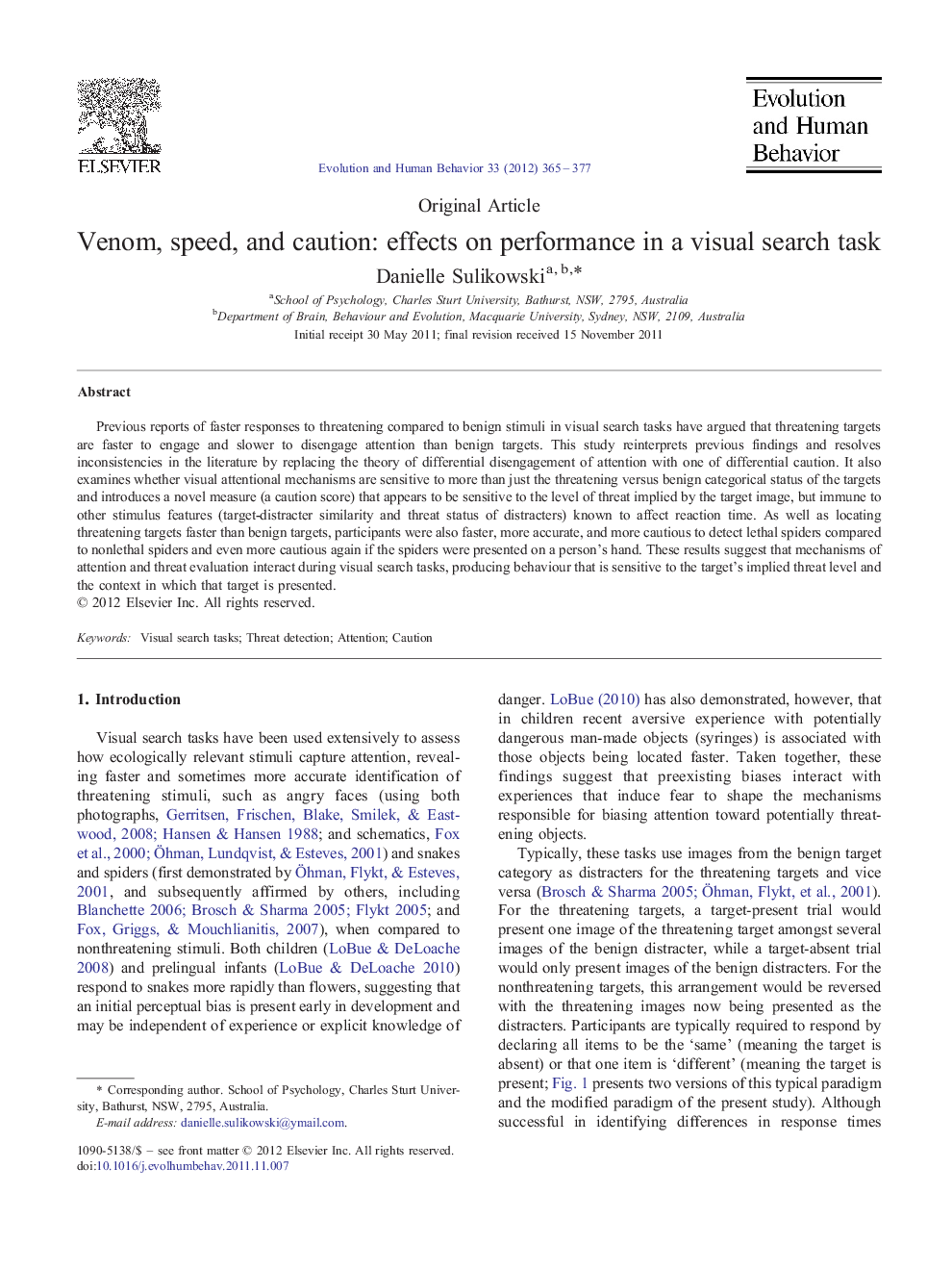| Article ID | Journal | Published Year | Pages | File Type |
|---|---|---|---|---|
| 943380 | Evolution and Human Behavior | 2012 | 13 Pages |
Previous reports of faster responses to threatening compared to benign stimuli in visual search tasks have argued that threatening targets are faster to engage and slower to disengage attention than benign targets. This study reinterprets previous findings and resolves inconsistencies in the literature by replacing the theory of differential disengagement of attention with one of differential caution. It also examines whether visual attentional mechanisms are sensitive to more than just the threatening versus benign categorical status of the targets and introduces a novel measure (a caution score) that appears to be sensitive to the level of threat implied by the target image, but immune to other stimulus features (target-distracter similarity and threat status of distracters) known to affect reaction time. As well as locating threatening targets faster than benign targets, participants were also faster, more accurate, and more cautious to detect lethal spiders compared to nonlethal spiders and even more cautious again if the spiders were presented on a person's hand. These results suggest that mechanisms of attention and threat evaluation interact during visual search tasks, producing behaviour that is sensitive to the target's implied threat level and the context in which that target is presented.
